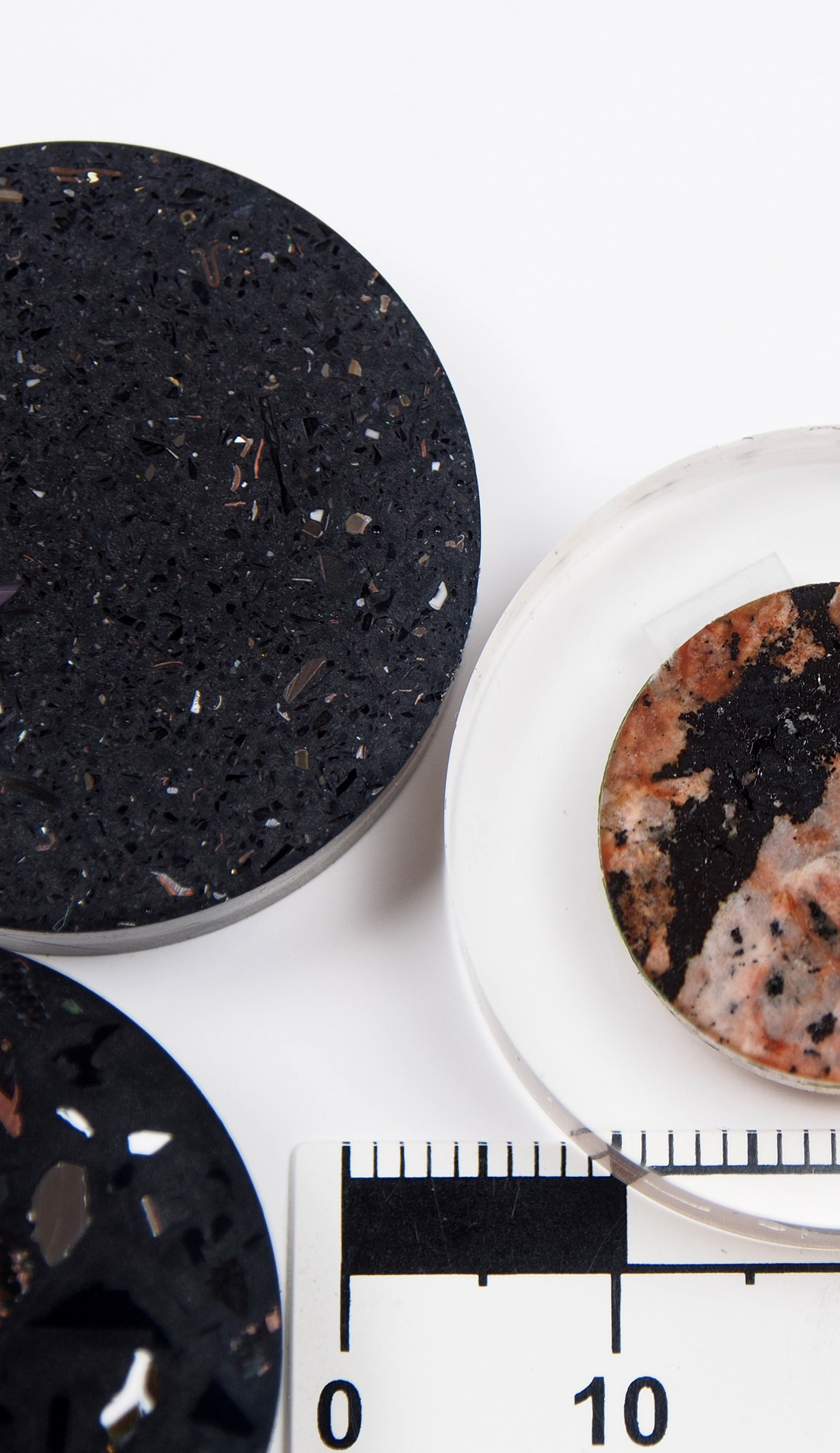
X-Ray Diffractometry (XRD)
X-ray diffractometry (XRD) allows to capture a wide range of data. The method can be used complementary to MLA analyses for the mineralogical analysis of rocks and synthetic mixtures and is applied along the entire raw materials value chain. Besides the qualitative and quantitative mineralogical phase analysis X-ray diffractometry provides information on crystal structure, preferred crystal orientation (texture) and percent crystallinity.
The detection limits for a phase determination and quantification (Rietveld Refinement) are matrix-dependent. For a quantitative analysis sample quantities between approximately 2 to 3 g are required.
X-Ray Fluorescence Analysis (XRF)
X-ray fluorescence analysis (XRF) allows to determine the chemical composition of various materials. The method is widely used in the metal processing industry as well as for analyzing glass, ceramics and building materials. X-ray fluorescence analyses enable fast and precise qualitative and quantitative detection of major, minor and trace elements.
As the samples are measured as solids no chemical digestion is needed. The detection limits for a quantification are matrix-dependent and lie between 10 and 200 ppm. For analysis of major elements quantities of approximately 2 g sample material are required (loss on ignition has to be determined). For trace element analysis approximately 10 g of sample material are needed.
